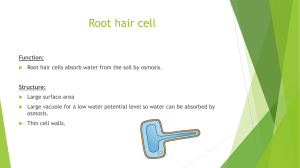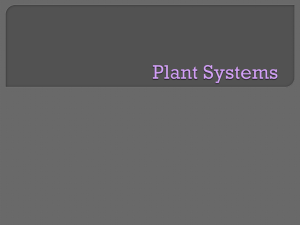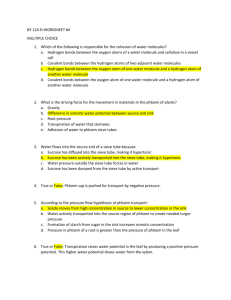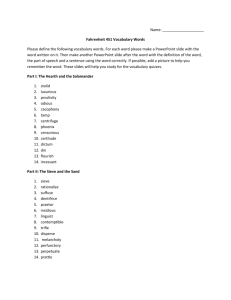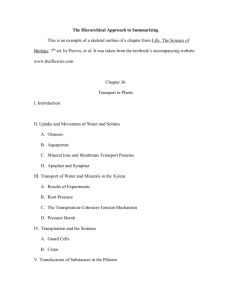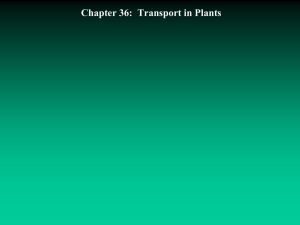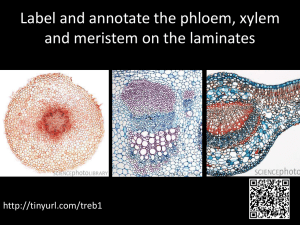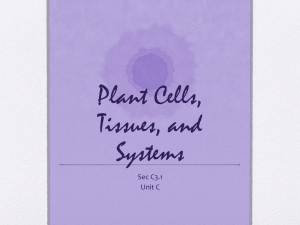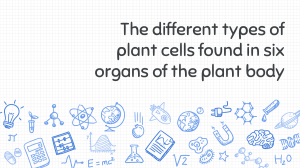Fluid Transport in vascular plants…Ed's summary
advertisement
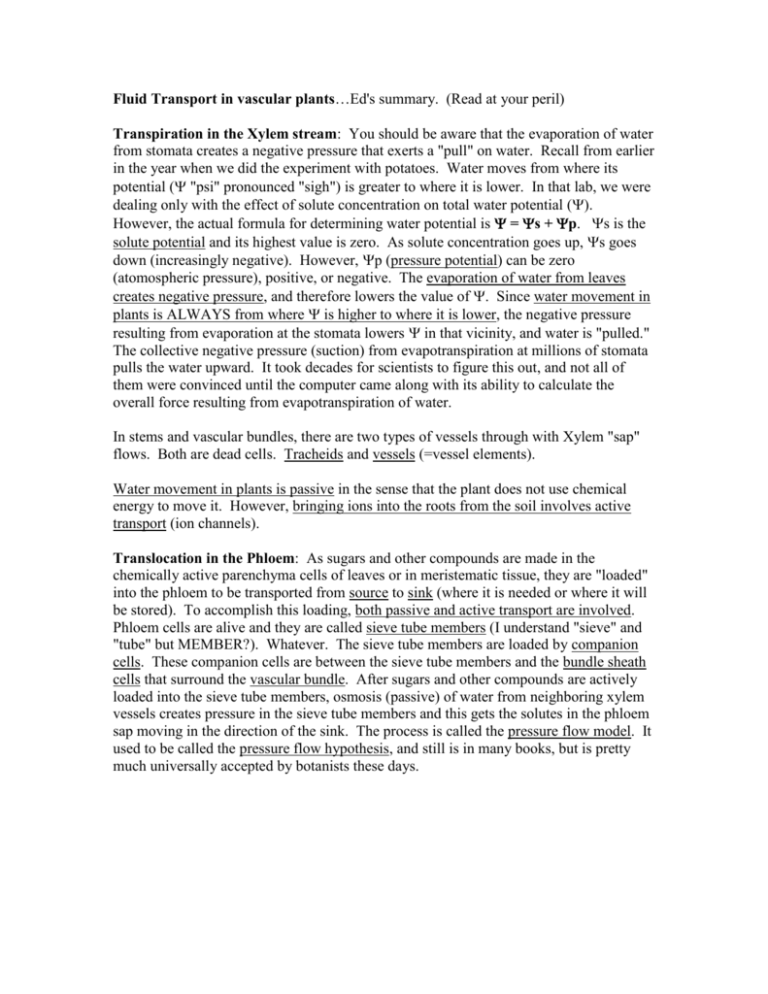
Fluid Transport in vascular plants…Ed's summary. (Read at your peril) Transpiration in the Xylem stream: You should be aware that the evaporation of water from stomata creates a negative pressure that exerts a "pull" on water. Recall from earlier in the year when we did the experiment with potatoes. Water moves from where its potential ( "psi" pronounced "sigh") is greater to where it is lower. In that lab, we were dealing only with the effect of solute concentration on total water potential (). However, the actual formula for determining water potential is = s + p. s is the solute potential and its highest value is zero. As solute concentration goes up, s goes down (increasingly negative). However, p (pressure potential) can be zero (atomospheric pressure), positive, or negative. The evaporation of water from leaves creates negative pressure, and therefore lowers the value of . Since water movement in plants is ALWAYS from where is higher to where it is lower, the negative pressure resulting from evaporation at the stomata lowers in that vicinity, and water is "pulled." The collective negative pressure (suction) from evapotranspiration at millions of stomata pulls the water upward. It took decades for scientists to figure this out, and not all of them were convinced until the computer came along with its ability to calculate the overall force resulting from evapotranspiration of water. In stems and vascular bundles, there are two types of vessels through with Xylem "sap" flows. Both are dead cells. Tracheids and vessels (=vessel elements). Water movement in plants is passive in the sense that the plant does not use chemical energy to move it. However, bringing ions into the roots from the soil involves active transport (ion channels). Translocation in the Phloem: As sugars and other compounds are made in the chemically active parenchyma cells of leaves or in meristematic tissue, they are "loaded" into the phloem to be transported from source to sink (where it is needed or where it will be stored). To accomplish this loading, both passive and active transport are involved. Phloem cells are alive and they are called sieve tube members (I understand "sieve" and "tube" but MEMBER?). Whatever. The sieve tube members are loaded by companion cells. These companion cells are between the sieve tube members and the bundle sheath cells that surround the vascular bundle. After sugars and other compounds are actively loaded into the sieve tube members, osmosis (passive) of water from neighboring xylem vessels creates pressure in the sieve tube members and this gets the solutes in the phloem sap moving in the direction of the sink. The process is called the pressure flow model. It used to be called the pressure flow hypothesis, and still is in many books, but is pretty much universally accepted by botanists these days.
